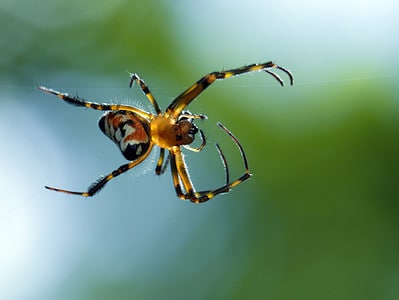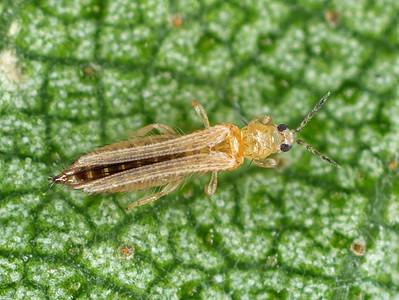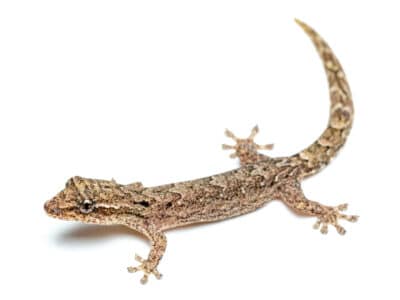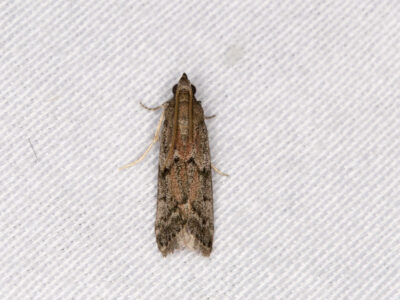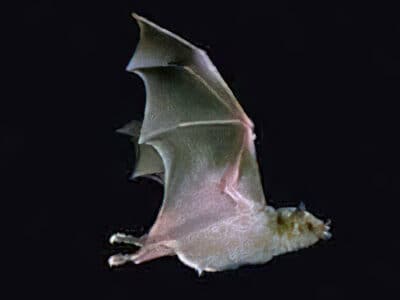Short-Eared Owl
Asio flammeus
The short-eared owl is one of the most widespread owl species in the world, covering five continents.
Advertisement
Short-Eared Owl Scientific Classification
- Kingdom
- Animalia
- Phylum
- Chordata
- Class
- Aves
- Order
- Strigiformes
- Family
- Strigidae
- Genus
- Asio
- Scientific Name
- Asio flammeus
Read our Complete Guide to Classification of Animals.
Short-Eared Owl Conservation Status
Short-Eared Owl Facts
- Prey
- Rodents, shrews, rabbits, gophers, bats, and weasels
- Main Prey
- Rodents
- Name Of Young
- Owlets
- Group Behavior
- Mainly solitary
- Fun Fact
- The short-eared owl is one of the most widespread owl species in the world, covering five continents.
- Estimated Population Size
- 1.2 to 2.1 million
- Biggest Threat
- Habitat loss, collisions, hunting, and pesticides
- Most Distinctive Feature
- yellowish-orange eyes encircled with black rings
- Distinctive Feature
- large head, broad wings
- Wingspan
- 43 inches
- Incubation Period
- 24 to 37 days
- Age Of Independence
- 27 to 36 days
- Age Of Fledgling
- 12 to 18 days
- Habitat
- prairies, coastal grasslands, meadows,
- Predators
- bald eagles, northern goshawks, red-tailed hawks, and snowy owls
- Diet
- Carnivore
- Lifestyle
- Nocturnal
- Type
- Bird
- Common Name
- short-eared owl
- Special Features
- Short, hooked bill
- Number Of Species
- 11
- Location
- North America, South America, Europe, Asia, Africa
- Nesting Location
- Marshy areas on the dry ground
- Migratory
- 1
View all of the Short-Eared Owl images!
“They have long, broad wings and soar like hawks.”
Summary
The short-eared owl (Asio flammeus) is a medium-sized owl native to all continents except Antarctica and Australia. They live in open areas with low vegetation, like coastal grasslands, prairies, and meadows. They are primarily solitary but may roost communally. And they spend their days and nights hunting for prey as they soar hawk-like across the terrain. Find out everything there is to know about this owl species, including where it lives, what it eats, and how it behaves.
5 Amazing Short-Eared Owl Facts
- The short-eared owl is one of the most widespread owl species in the world, covering five continents.
- They have black rings around their eyes, giving them the appearance of wearing mascara.
- They use their long, broad wings to soar like hawks when migrating.
- They are active all hours of the day and night during the nesting season but are primarily nocturnal the rest of the year.
- They place their nests on the ground, which makes them susceptible to mammalian predators. However, both parents fearlessly defend their nests.
Where to Find the Short-Eared Owl
Short-eared owls live on all continents except for Antarctica and Australia. They breed in Europe, Asia, South America, and North America and are partially migratory. Some populations in the northernmost ranges move south during winter. They are also highly nomadic, typically relocating to areas with higher rodent populations. These owls prefer to live in open areas with low vegetation, such as prairies, coastal grasslands, meadows, savannas, tundra, marshes, dunes, and agricultural regions. Look for them soaring low to the terrain or nesting on the ground surrounded by vegetation.
Short-Eared Owl Nest
They nest in marshy areas on the dry ground, typically on a ridge around tall grass and shrubs. The nest is a depression in the soil 10 inches across and two inches deep, which females line with grass and feathers.
Scientific Name
The short-eared owl (Asio flammeus) is from the Strigiformes order in the Strigidae family, encompassing typical or “true” owls. It is in the Asio genus, and its specific epithet, flammeus, is Latin for “flame-colored.”
There are eleven recognized subspecies of short-eared owl:
- A. f. flammeus – North America, Europe, North Africa, and northern Asia
- A. f. cubensis – Cuba
- A. f. domingensis – Hispaniola
- A. f. portoricensis – Puerto Rico
- A. f. bogotensis – Colombia, Ecuador, and northwestern Peru
- A. f. galapagoensis – the Galápagos Islands
- A. f. pallidicaudus – Venezuela, Guyana and Suriname
- A. f. suinda – from southern Peru and southern Brazil to Tierra del Fuego
- A. f. sanfordi – the Falkland Islands
- A. f. sandwichensis – the Hawaiian Islands
- A. f. ponapensis – eastern Caroline Island
Size, Appearance, & Behavior

The short-eared owl is somewhat social, forming monogamous bonds and communally breeding on occasion.
©RobDemPhoto/Shutterstock.com
This medium-sized owl measures 13 to 17 inches long and weighs 7.3 to 16.8 ounces, with a 33 to 43-inch wingspan. This species has big eyes, a large head, a short, hooked bill, and broad wings. Adults are a mottled brown with yellowish-orange eyes encircled with black rings and whitish discs. Males and females are similar in appearance, but the females are slightly larger.
These birds are primarily nocturnal but stay active all hours of the day and night during the breeding season. The short-eared owl is somewhat social, forming monogamous bonds and communally breeding on occasion. This species is typically silent but makes various barks, hisses, and squeals on their nesting grounds. They have long, broad wings and soar like hawks, especially when migrating.
Migration Pattern and Timing
The short-eared owl is partially migratory. Populations in northern regions will move south during winter. In North America, those that breed in Canada advances to the United States during winter. In contrast, some populations in the Northern United States and parts of South America stay in their environments year-round.
Diet
Short-eared owls are carnivores who hunt by flying low to the ground.
What Does the Short-Eared Owl Eat?
Their diet consists mainly of rodents, such as voles, lemmings, and mice. They also eat shrews, rabbits, gophers, bats, weasels, and muskrats. Short-eared owls occasionally eat other birds, especially in coastal regions. They hunt by flying low to the ground and hovering before dropping down on their prey. They look for food primarily by sound, typically around dawn and dusk.
Predators, Threats, and Conservation Status
The IUCN lists the short-eared owl as LC or “least concern.” Due to its extensive range and extremely large population, this species does not meet “threatened” status thresholds. These birds are vulnerable to habitat loss, collisions with wind turbines and vehicles, hunting, and pesticide ingestion. Future threats include endangered young from spring heat waves and habitat loss from wildfires.
What Eats the Short-Eared Owl?
The short-eared owl is vulnerable to diurnal raptors, such as bald eagles, northern goshawks, red-tailed hawks, and snowy owls. They also nest on the ground, which makes their eggs and young targets for mammalian predators like dogs, foxes, coyotes, skunks, ravens, gulls, and crows. They use camouflage as a deterrent but will fearlessly attack intruders when threatened.
Reproduction, Young, and Molting
Short-eared owls are seasonally monogamous and perform “sky dances” during courtship. Females lay six to eight white eggs and incubate them for 24 to 37 days, while the males bring food. Both parents assist in feeding their young and tirelessly defend their nests by making loud noises, posturing, and chasing. The young fledge the nest 12 to 18 days after hatching and can fly at 27 to 36 days. This species reaches sexual maturity at one year and has an average lifespan of 4.8 years, but it can live more than 12 years in the wild.
Population
The global short-eared owl population is estimated to number 1.2 to 2.1 million mature individuals. Europe forms 14% of its global range, with 169,000 to 284,000 individuals. From 1970 to 2017, there was a 68% reduction in its numbers in North America. However, trends for this species are difficult to determine due to its nomadic nature. It is unknown if their population is still declining.
Related Animals:
View all 293 animals that start with SShort-Eared Owl FAQs (Frequently Asked Questions)
What is the call of the short-eared owl?
This species is typically silent but makes various barks, hisses, and squeals on their nesting grounds.
Why is the short-eared owl endangered?
Short-eared owls are not threatened or endangered. However, they are vulnerable to habitat loss, collisions with wind turbines and vehicles, hunting, and pesticide ingestion.
Where can I find a short-eared owl?
Short-eared owls live on all continents except for Antarctica and Australia. These owls prefer to live in open areas with low vegetation, such as prairies and coastal grasslands.
How many short-eared owls are left?
The global short-eared owl population is estimated to number 1.2 to 2.1 million mature individuals.
How big is the short-eared owl?
This medium-sized owl measures 13 to 17 inches long and weighs 7.3 to 16.8 ounces, with a 33 to 43-inch wingspan.
What does the short-eared owl eat?
Their diet consists mainly of rodents, such as voles, lemmings, and mice. They also eat shrews, rabbits, gophers, bats, weasels, and muskrats.
What are short-eared owl predators?
The short-eared owl is vulnerable to diurnal raptors, such as bald eagles, northern goshawks, red-tailed hawks, and snowy owls.
What time do short-eared owls come out?
They look for food primarily by sound, typically around dawn and dusk.
Thank you for reading! Have some feedback for us? Contact the AZ Animals editorial team.
Sources
- Connecticut Deparment of Energy and Environmental Protection, Available here: https://portal.ct.gov/DEEP/Wildlife/Fact-Sheets/Short-eared-Owl
- Red List / BirdLife Internation, Available here: https://www.iucnredlist.org/species/22689531/202226582








